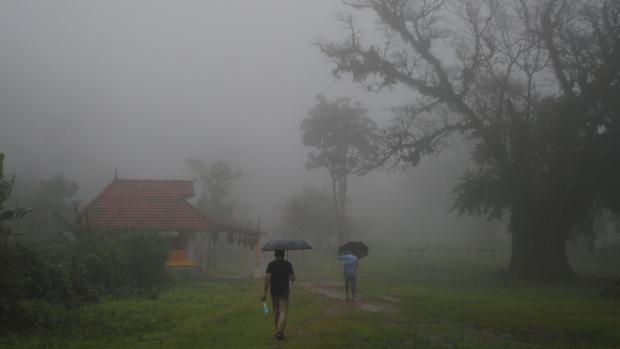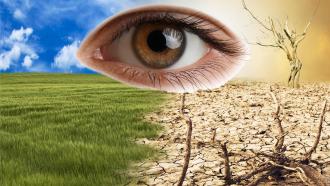
Photo : Purabi Deshpande / Research Matters
It happened in 2005. Again in 2016. Now it’s back in 2017. There seems to be no respite for the city of Mumbai as flooding is becoming the norm, thanks to the fury of the rains. However, surprisingly enough, major parts of Maharashtra and Karnataka, few hundred kilometers from Mumbai, are repeatedly recording a less-than-average monsoon, taking those regions closer to drought. This year also saw unprecedented floods in most part of north-eastern states of India, while central India is parched since the last year.
Blame it on the climate change or the ecological destruction, there is a significant change in the pattern, duration and intensity of the Indian summer monsoon over the past few years. Sudden, sporadic spells of heavy rainfall have become frequent, and too much or too little rains have become the new normal, with the total seasonal rainfall over India exhibiting a decreasing trend. Isn’t there a relationship of some sorts between the two extremes?
Yes, says a new study by scientists from the Indian Institute of Science, Bangalore. Published in the journal Scientific Reports, the study points to a physics-based answer to this apparent paradox. The researchers say that when there are more events of sudden, heavy rainfall, the overall monsoon rainfall shows a trend of deficit -- a conundrum on which millions of fates rest.
In theory, monsoon rainfall is caused by many physics-related phenomena in action. The difference in wind speed at various heights above the surface, vertical shear, causes an instability in the atmosphere. Due to this, convection and thus rainfall ensues. Other changes in the lowermost layer of the atmosphere, the troposphere, cause a reversal of wind direction, called monsoon, during the months of June to September every year.
Observing various physical factors like temperature, pressure and winds at various heights in the atmosphere allow scientists to make predictions using models. “Prediction of rainfall is done by using dynamical and statistical models. The dynamical models are based on physics, and would show better skill in prediction if they can capture the observed physics of the climate system”, explained Dr. Nirupam Karmakar of the Indian Institute of Science, a co-author of the study.
Explaining further, Dr. Karmakar said that the Indian monsoon follows a quasi-rhythmic pattern during the months from June to September, i.e. there are periods of high rainfall and little or no rainfall. These are called active and break phases. In the middle of this intra-seasonal cycle, sometimes there are short periods of extremely heavy rainfall. Such events bring flash floods, stress the drainage systems and could cause crop damage.
What could cause the increase in extreme rainfall events in recent decades? “Urbanization and reduction of green cover might play a role, as it could change the land-use and land-cover that affects regional rainfall. Few studies in the past suggest that the large-scale circulation over the South Asian region, that causes the monsoon rains, has weakened in last few decades, leading to the decrease in the seasonal rainfall”, said Dr. Karmakar. Additionally, aerosols i.e. particles of dust and pollutants suspended in the air, can have a significant impact on the monsoon rainfall over India.
Of specific interest to the researchers was how frequent extreme rainfall events during the break phase affected the overall rainfall of Central India. The researchers studied rainfall data for Central India from 1951 to 2013 and observed that extreme rainfall events, especially in the break phase have considerably increased after 1980. Additionally, the seasonal mean rainfall has shown a decrease after 1980. In their model, they simulated an increase in the extreme rainfall events by simulating higher temperature in the the upper stratosphere, which was a part of the ‘heating experiment’.
“The additional atmospheric heating is expected to create a conducive environment for heavy rainfall in a very short timescale” commented Dr. Karmakar. They compared results of this experiment with normal simulations. The researchers observed that, as compared to the default simulation, the heating experiment simulation showed increased events of extreme rainfall in the break phase. The rainfall during the active phase, and the length of the active phase reduced. The average aggregate rainfall also fell.
The researchers attribute this observation to the fact that extreme rainfall events tend to reduce the vertical shear, and make the atmosphere more stable. This weakens the convection, resulting in lesser rainfall in the subsequent active phase of the rainfall. Though large-scale changes in the circulation have been studied earlier in order to understand the weakening of monsoon, this study is one of the newer attempts made to understand small-scale changes that could potentially reduce rainfall.
“Our research provides a pathway to understand the changing relationship between slowly varying modes in sub-seasonal timescale and extreme rain events”, said Dr. Karmakar. Going ahead, the researchers wish to study the other factors that could influence Indian monsoon. “The effects of increased GHG (greenhouse gases) emissions, urbanization or altered aerosol forcing are not present in our simulations. We keep these as our future goals. Complex modeling studies are required to conclude on how these factors play a role”, signed off Dr. Karmakar.






